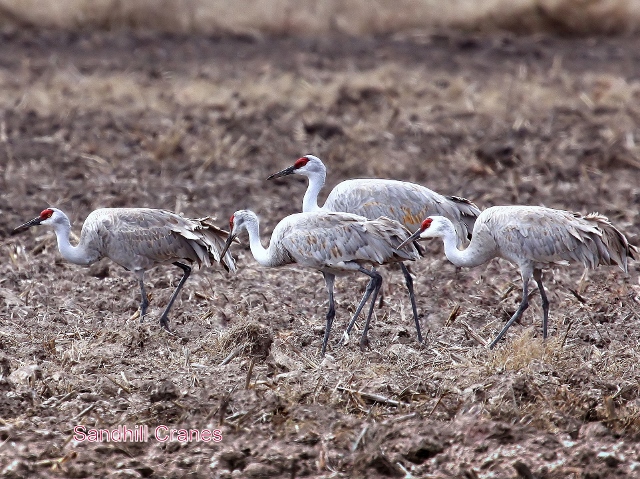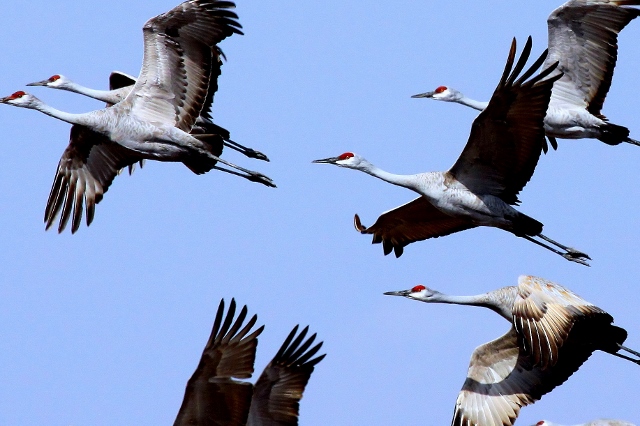by Marilyn Lorenz photos by Chuck Lorenz

We are privileged to be in the wintering grounds of one of the most interesting birds in America. Flocks of Sandhill Cranes spend the winter along or near the Gulf coast and we often see them in pastures in our area, especially walking among the cattle. They are also fond of the rice fields near Houston
One of the largest birds in America, the adults can stand 4 feet tall with a wingspread of 6-to-7 feet. They are very strong fliers and easily make the trip to Idaho and Canada each spring. They have long legs and a long neck and are a soft gray in color with a distinctive crimson cap. In fact, most species of cranes have that red cap. In flight you can distinguish them from herons by the fact that they fly with their necks stretched out rather than folded in, as herons do.
On the ground they have a distinctive stance, much more horizontal than the upright blue heron. Also, they wear a “bustle” of rounded feathers that cover their rumps. Actually these are the tertiary feathers of their wings but it does give an impression of a Gibson Girl.
Cranes mate for life and each spring they fly to the Platte River in Nebraska. This is a major stopping place for the birds to gather while resting and feeding up to ensure that they will be in good condition when they arrive at the breeding grounds.

A premier wildlife spectacle as many as half a million birds assemble here and people come from all over the country to witness this incredible sight. From Nebraska they travel to the tundra of Canada and Alaska or to the grasslands of our northern states. They usually hatch one or two chicks and these juveniles stay with their parents until the following year.
When the adults fly to the breeding grounds the youngsters form their own group of “bachelors.” These flocks of adolescents will stay together for five or six years until they are ready to choose mates of their own.
There is nothing subtle about Sandhills and they can be heard from quite a long distance away even when flying overhead. The cranes are not threatened on their breeding grounds nor in their wintering places, but rather at the major stopping point of their migration. As the water of the Platte River is channeled away for other uses the river’s flow is diminished each year and the fate of the Sandhills may depend on the fate of the river. Fortunately, organizations such as The Crane Trust and Audubon Society are working to try to ensure that the birds will always have a haven in Nebraska.